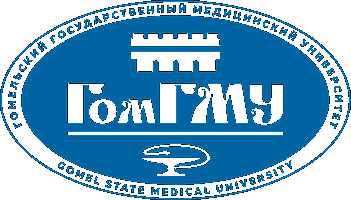| dc.contributor.author | Козич, Е. А. | |
| dc.contributor.author | Красавцев, Е. Л. | |
| dc.date.accessioned | 2022-01-17T07:51:36Z | |
| dc.date.available | 2022-01-17T07:51:36Z | |
| dc.date.issued | 2021 | |
| dc.identifier.citation | Козич, Е. А. Предикторы развития гепаторенального синдрома / Е. А. Козич, Е. Л. Красавцев // Проблемы здоровья и экологии. – 2021. – Т. 18, № 4. – С. 69-73. | ru_RU |
| dc.identifier.uri | http://elib.gsmu.by/handle/GomSMU/9651 | |
| dc.description.abstract | Цель исследования. Определить предикторы развития гепаторенального синдрома (ГРС) у пациентов с циррозом печени.
Материалы и методы. Проведен анализ медицинской документации 79 пациентов с диагнозом «Цирроз печени». Лабораторное исследование включало общий и биохимический анализ крови. В общем анализе крови исследовано количество эритроцитов и лейкоцитов. В биохимическом анализе крови определено содержание АЛТ (Е/л), АСТ (Е/л), общего билирубина (мкмоль/л), прямого били- рубина (мкмоль/л), непрямого билирубина (мкмоль/л), щелочной фосфатазы (Е/л), альбумина (г/л), мочевины (ммоль/л), креатинина (мкмоль/л), холестерина (ммоль/л). У всех пациентов определялись маркеры вирусных гепатитов.
Результаты. Определены предикторы развития гепаторенального синдрома: увеличение количества лейкоцитов, общего и непрямого билирубина, мочевины и уменьшение количества эритроцитов и альбумина. Наиболее специфичными предикторами были количество непрямого билирубина (98 %) и содержание альбумина в сыворотке крови (89,8 %), а наиболее чувствительными — АСТ (96,7 %) и содержание эритроцитов и креатинина (73,3 %).
Заключение. Полученные наиболее значимые предикторы развития помогут в диагностике развития гепаторенального синдрома у пациентов с циррозом печени. | ru_RU |
| dc.description.abstract | Objective. To identify the predictors of the development of hepatorenal syndrome in patients with liver cirrhosis.
Materials and methods. We analyzed the medical records of 79 patients diagnosed with liver cirrhosis.
The laboratory research included general and biochemical blood tests. The general blood test measured erythrocyte and leukocyte counts. The biochemical blood test measured the content of ALT (U/L), AST (E/L), total bilirubin (μmol/L), direct bilirubin (μmol/L), indirect bilirubin (μmol/L), alkaline phosphatase (U/L), albumin (g/L), urea (mmol/L), creatinine (mmol/L), cholesterol (mmol/L).Viral hepatitis markers were determined for all the patients.
Results. The predictors of the development of hepatorenal syndrome were identified: increased leukocyte count, increased total and indirect bilirubin levels, urea level and decreased erythrocyte count and albumin level. The most specific predictors were the amount of indirect bilirubin (98 %) and the content of albumin in the serum (89.8 %), and the most sensitive predictors were AST (96.7 %) and the content of red blood cells and creatinine (73.3 %).
Conclusion. The most significant predictors of the development obtained will contribute to the diagnosis of the development of hepatorenal syndrome in patients with liver cirrhosis. | |
| dc.publisher | ГомГМУ | ru_RU |
| dc.subject | цирроз печени | ru_RU |
| dc.subject | гепаторенальный синдром | ru_RU |
| dc.subject | предикторы | ru_RU |
| dc.subject | ROC-анализ | ru_RU |
| dc.subject | liver cirrhosis | ru_RU |
| dc.subject | hepatorenal syndrome | ru_RU |
| dc.subject | predictors | ru_RU |
| dc.subject | ROC-analysis | ru_RU |
| dc.title | Предикторы развития гепаторенального синдрома | ru_RU |
| dc.type | Article | ru_RU |
| dc.identifier.doi | https://doi.org/10.51523/2708-6011.2021-18-4-9 | |
